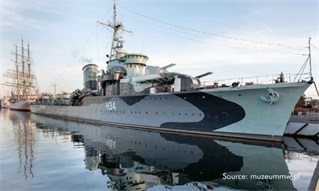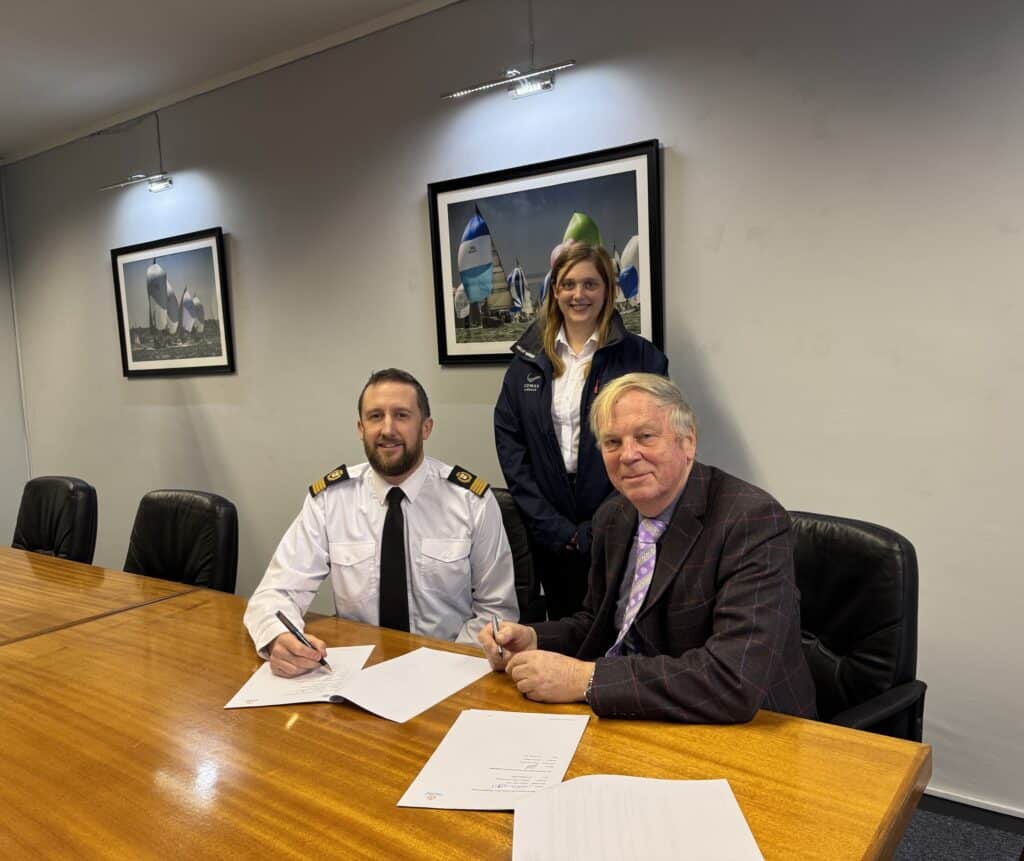
This year is the 80th Anniversary of the Defence of Cowes by ORP Błyskawica on 4-5 May 1942.
The true story of the 1942 defence of the towns of Cowes and
East Cowes by a Polish naval ship is commemorated every year, and rightly so. Although
seventy people died, the action of ORP Błyskawica spared the towns and their
people from worse destruction.
Blitz on Cowes
Just before eleven in the evening of 4 May waves of German
fighter bombers began a low-level attack on Cowes Harbour and the towns of Cowes and
East Cowes. The planes dropped parachute flares, high explosive bombs and
incendiary bombs, augmented by machinegun fire. A 16-year-old eyewitness, Cecil
B Ward said: “On leaving the house we heard the sound of aircraft engines and
saw a string of flares descending in a west to east direction in a line
approximately over the Saunders-Roe aircraft factory.”
In for repair at JS White’s shipyard, ORP Błyskawica
quickly became a floating anti-aircraft base in defence of the towns. Lit by
flames from the burning dockyard, Captain Wojciech Francki ordered his crew to
set a smokescreen to leeward, obscuring the two destroyers in-build (HMS
Quiberon and HMS Quickmatch) and a considerable area of downwind.
ORP Błyskawica was supposed to be disarmed while in refit, but
Captain Francki had ensured that the ship’s ammunition supplies were
maintained, and the crew combat-ready. Captain Francki’s foresight meant that Błyskawica’s
guns kept firing almost continuously for two hours and forced the German planes
to higher altitudes. Her guns grew so hot that the Polish crew drew seawater to
cool them. Błyskawica
was supported by smaller calibre weapons from the six Free French Naval units
based in Marvin’s Yard further south, and the local ARP anti-aircraft guns.
After the raid, Captain Francki sent his men to assist
ashore, helping to fight the fires raging in JS White’s and the other Medina
shipyards, and providing medical assistance in the town.
Another wave of bombers arrived just before 4am and
subjected the towns to an hour of bombardment, which included heavy-duty armour-piercing
munitions intended to sink the Błyskawica. Again, Francki laid down a
smokescreen and kept firing the ship’s eight 40mm guns to keep the planes at a
distance.
During the two raids on the night of the 4-5 May, the ship
fired 2,030 40mm shells and 10,500 rounds of machine gun ammunition, and 160
German planes dropped 200 tonnes of high-explosive bombs and thousands of
incendiaries. 42 people died in East Cowes, 28 in Cowes and 13 elsewhere on the
Island.
The attack was part of what became known as the ‘Baedeker
Blitz’, raids on cities and towns of cultural value, in retaliation for the RAF
bombing of the German cities of Lübeck and Rostock.
About ORP Błyskawica
ORP Błyskawica was one of two sister ships built on the Medina
for the Polish navy. Błyskawica (Lightning) and Grom (Thunder) were the fastest
and most heavily-armed destroyers of their time. Błyskawica’s keel was laid in JS
White’s East Cowes yard in 1935, then when ready for fitting out she was nudged
across the river to the Cowes yard, from where she was launched in 1936.
With war imminent, Błyskawica left Poland for Britain in September
1939, becoming part of the Polish Destroyer Squadron of the Royal Navy’s Home
Fleet. The ship served in the Norwegian campaign, in the evacuation of Dunkirk
and on convoy duties in the North Atlantic and Mediterranean. Today ORP Błyskawica
is a museum ship in Gdynia, Poland.
Vessel statistics
Length: 114m
Speed: 39 knots
Crew: 192
Polish training ship ORP Wodnik will be visiting Cowes
between 4 and 8 May 2022 as part of the 80th anniversary commemorations.
J Samuel White’s and Cowes Shipbuilding
J Samuel White’s were the biggest shipbuilders on the
Medina, operating from the Falcon Yard in East Cowes (now GKN) and Thetis Yard
in Cowes, home to the hammerhead crane. The yard built 53 destroyers for the
first and second world wars, including ORP Błyskawica and her sister ship
ORP Grom.
These huge ships were all around 100-115m long – compare with
the current Red Funnel Raptor Class ferries which are 93m long. It is hard to
imagine these ships being built and repaired adjacent to the houses on Clarence
Road and Pelham Road.
The last surviving British WW2 destroyer, HMS Cavalier, is
on display at Chatham Royal Dockyard in Kent. She was launched at JS White’s in
1944 after a 19-month build and fit-out. A propeller from HMS Cavalier is
mounted on East Cowes seafront.
While Cowes no longer builds ships of Błyskawica’s
size, shipbuilding and repair remain an important economic activity on the
river. Wight Shipyard in East Cowes built the 41m Red Jet 6 and specialises in
aluminium fast ferries, Diverse Marine builds and repairs workboats, including 20m+
crew transfer vessels for wind farms, and Aluminium Marine Consultants builds a
range of workboats in aluminium.
80th anniversary events 2022 (subject to change):
30 April – 2 May
1000-1600 Exhibition in East Cowes Town Hall
4 May
1900 ‘Voices of the East Cowes Blitz’ in East Cowes Town
Hall
5 May
0800-1000 Polish naval vessel ORP Wodnik arrives in Cowes
Harbour.
5-gun salute from the Royal Yacht Squadron
1400 plaque unveiling in Kings Square, East Cowes
1430 guided blitz walk from Kings Square to Kingston
Cemetery, East Cowes
1600 memorial ceremony in Kingston Cemetary
7 May
1000-1800 blitz exhibition in Northwood Cemetery, Cowes
1300-1600 Polish food and dancing in Kings Square, East
Cowes
1430 Cowes blitz walk from the war memorial in Northwood
Park to Northwood Cemetery
1600 rededication of the communal war grave in Northwood
Cemetery, Cowes
1900 1940s dance at East Cowes Town Hall
8 May
1200 short remembrance ceremony at Francki Place, Cowes
1330 anniversary celebrations at the bandstand in Cowes
Parade
1800 ORP Wodnik departs Cowes
Reference sources:
Friends of Błyskawica
BBC WW2 People’s War archive – Cecil B Wight
Chatham Royal Dockyard
Muzeum Marynarki Wojennej
Wikipedia


